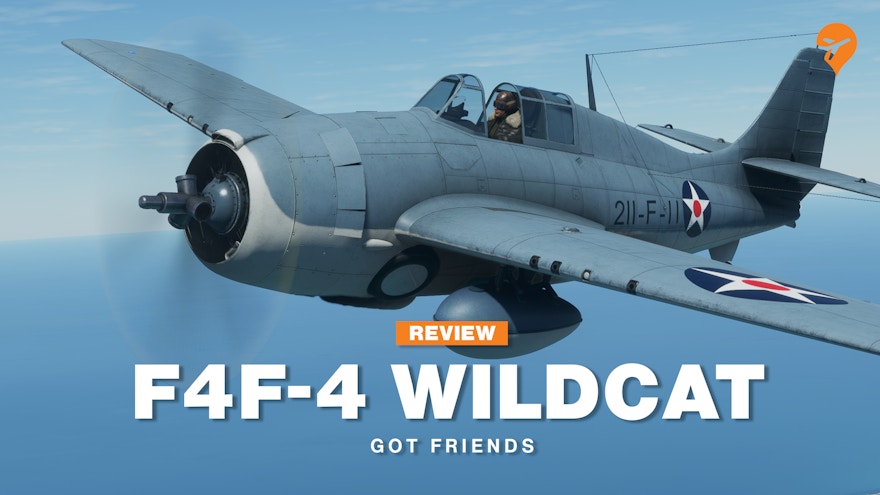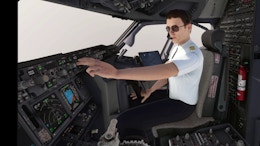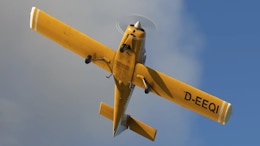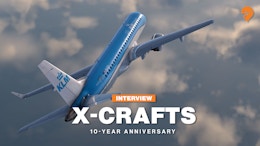Got Friends’ F4F-4 Wildcat is finally here. After nearly a year of development, the plane has finally found its way into our simulators, adding to a growing list of warbirds and other vintage aircraft. The Wildcat marks Got Friends’ first warbird release, but it’s certainly not their first aircraft. The team has previously been responsible for a range of aircraft, gliders, a helicopter and even a canoe. In this review I’ll try to tell you all about the developer’s latest aircraft, but first, a little bit of history about this plane.
While the F6F Hellcat was the hero of the second part of the Pacific Campaign during WWII, the F4F Wildcat was the hero of the first part. Not by choice though, as the plane was outperformed by the faster and more agile Japanese A6M Zero. It was simply all the US Navy had available after the Brewster Buffalo was removed from service. The plane still had some redeeming qualities as it was particularly heavily armoured, allowing it to take a heavier beating than its Japanese counterpart. After developing tactics that utilised its strong points while minimising its weaknesses, the US Navy was able to utilise it to help turn the tide of the war. The Wildcat played a major role in the defence of Wake Island, the Battle of Coral Sea, the Guadalcanal Campaign and the Battle of Midway. Despite this, the plane would never gain the favour of its pilots. The F4F Wildcat was slowly replaced from 1943 onwards by the F4U Corsair and the Wildcat’s brother, the F6F Hellcat.
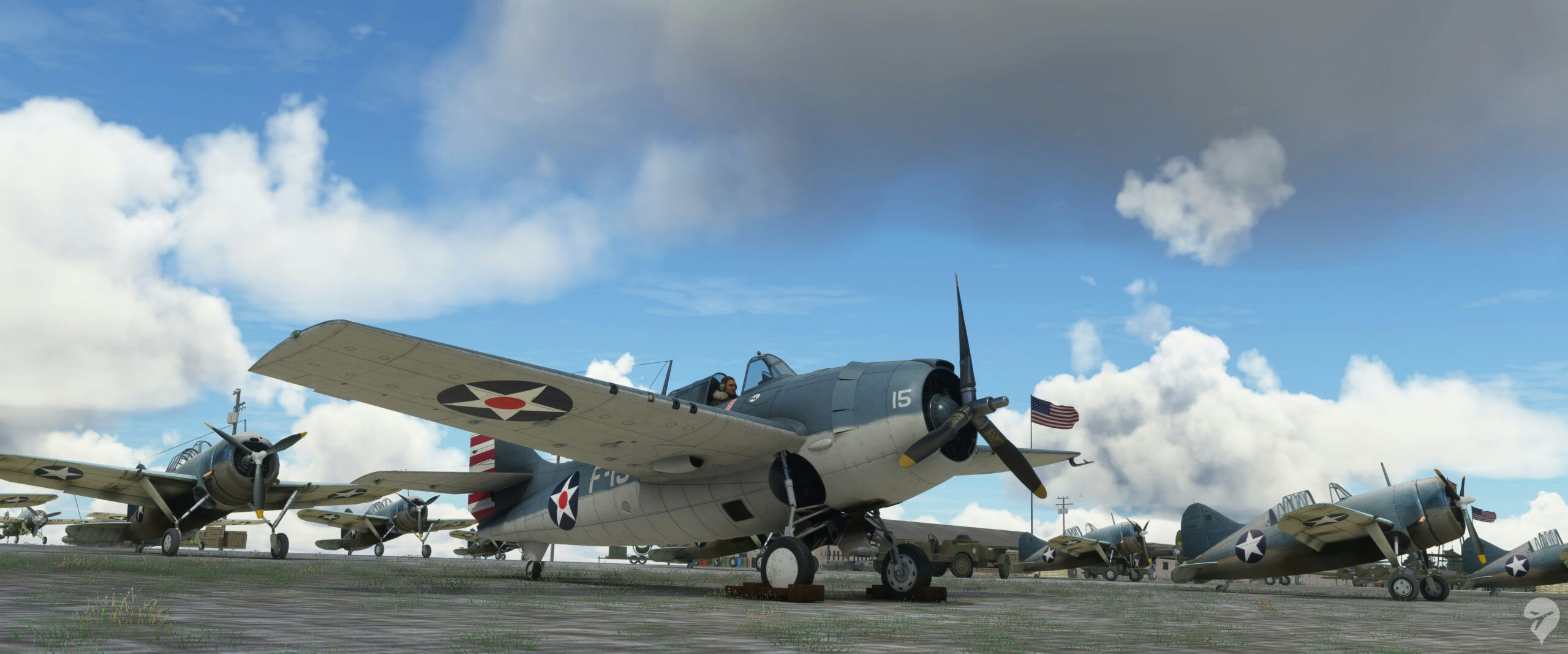
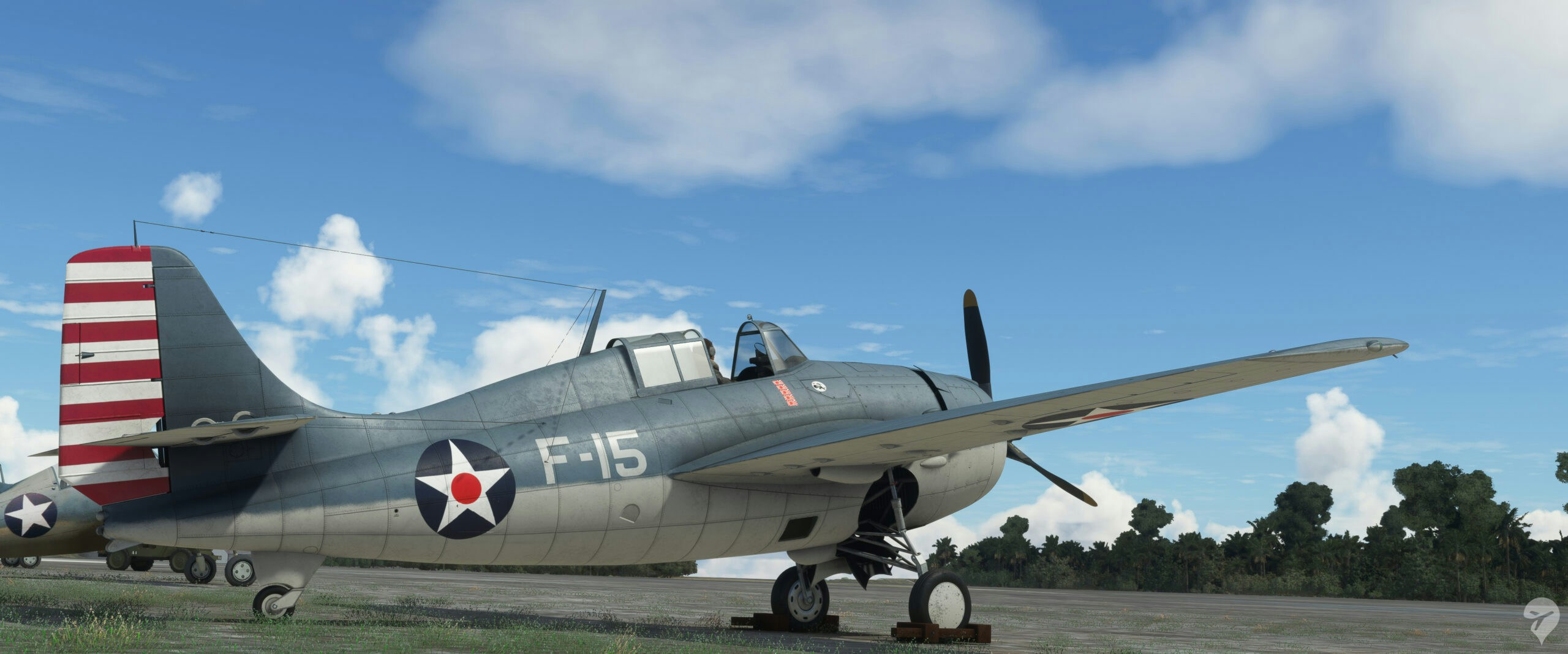

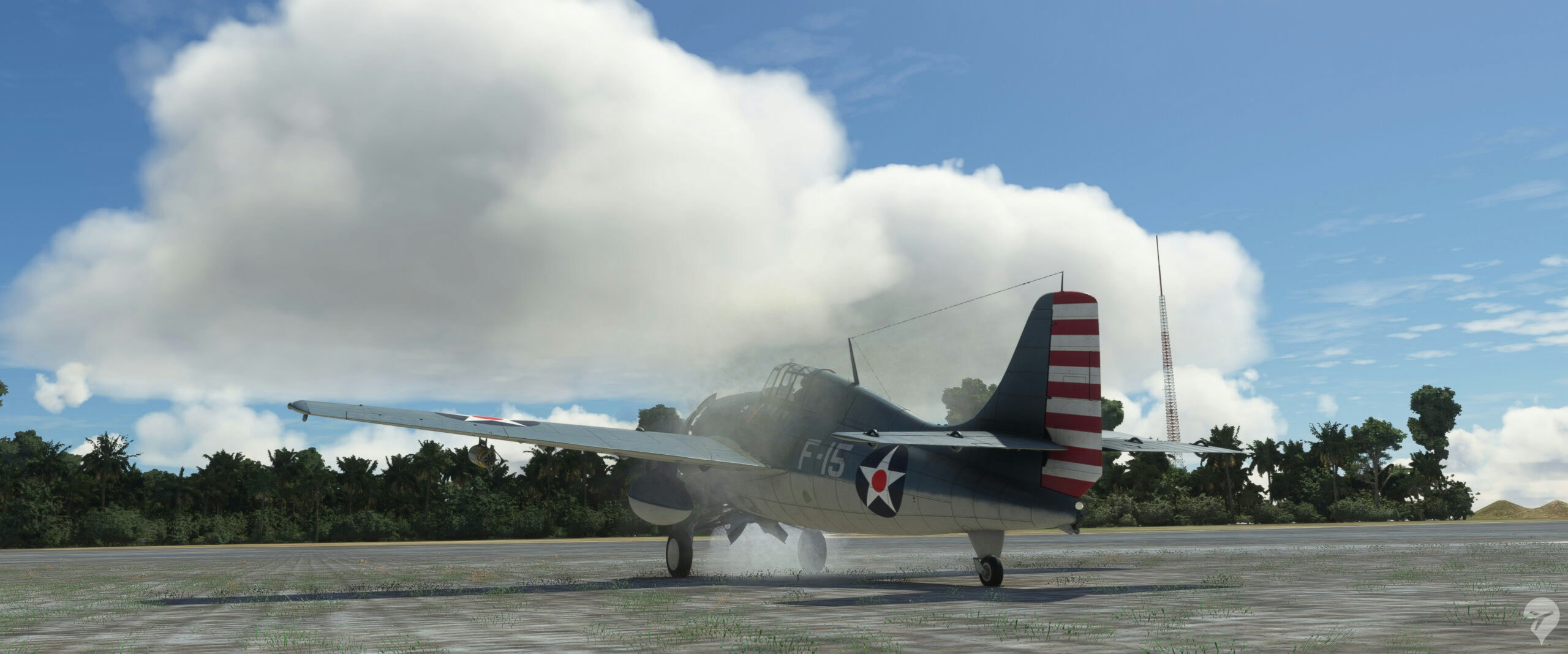

Model and Textures
When loading up the plane in the simulator, you’re greeted by the recognisable green interior that is so often found on aircraft from this era. In front of you, there is a gunsight reflector modelled in high detail. On your left you find your usual controls; manifold pressure, propeller control, mixture, several trim wheels and more. On your right, lights and electric controls, the circuit breaker and radio panel among others. The cockpit is very nicely crafted with highly detailed modelling. I couldn’t really make out any gaps in the panels or low-poly shapes or anything like that. For those that frequently fly warbirds, the cockpit might also look very familiar. You can easily see how this cockpit evolved to the later F6F Hellcat, with a lot of controls looking similar or the same and being in the same position. The front panel that contains your gauges also looks very similar. It’s a funny feeling of familiarity, and yet there are plenty of differentiations that will still require you to discover the cockpit and controls a little.
The outside the modelling is of a similar high quality as on the inside. The “stubby” aircraft is easily recognisable, with its short wings, big body and rather flat canopy. On the front, the engine is visible, and a lot of the engine’s details can be made out. The wings, when folded up, show a nicely modelled wing interior with cables and struts. The gear also looks well modelled, and its remarkable ‘folding’ mechanism has been accurately recreated. This includes the belt and cogs inside the aircraft body responsible for the retraction, which will animate when you raise or lower the gear. You’re unlikely to see it while flying, but you can see it if you move your camera around to inside the gear well. It’s a nice little detail that adds to the overall feeling of a feature-rich and complete plane.
Another such feature that should be mentioned can be found behind the pilot – quite literally; the Got Friends team has modelled some of the aircraft interior behind the pilots’ seat. It features some of the electrical equipment of the aircraft (relay units, transmitters, etc.). You can also see the cables that connect to your elevator and rudder controls, and these also animate accurately as you move the corresponding control in your cockpit.
The textures inside the cockpit are of a very high quality. They are very detailed and crisp, and all made with high resolution. The lighting interacts and reflects nicely and appropriately, and some elements appear a little more matte than others. Unfortunately the plane features relatively little wear and tear. This plane appears rather pristine, with only little bits of dirt and grime here and there. However, paint chipping, as is common in a heavily utilised warbird, is mostly absent from the cockpit altogether.
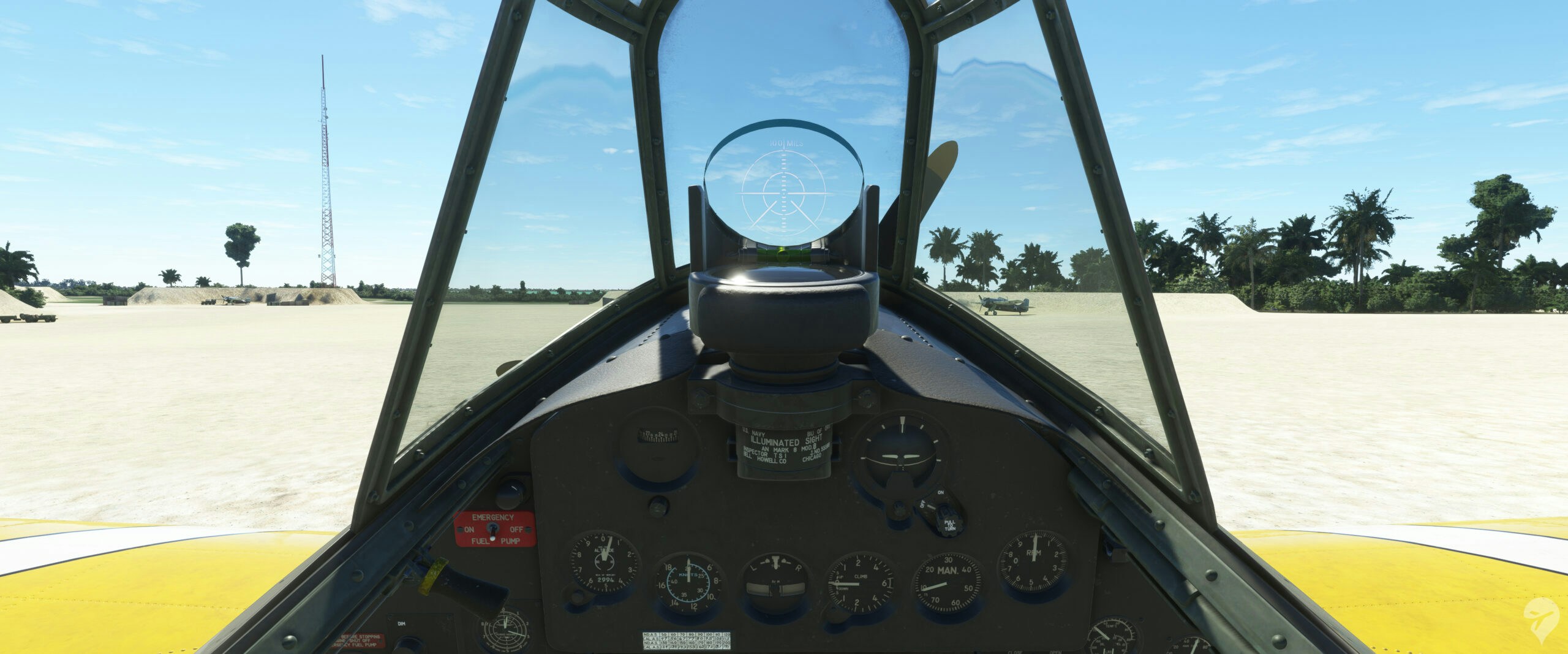
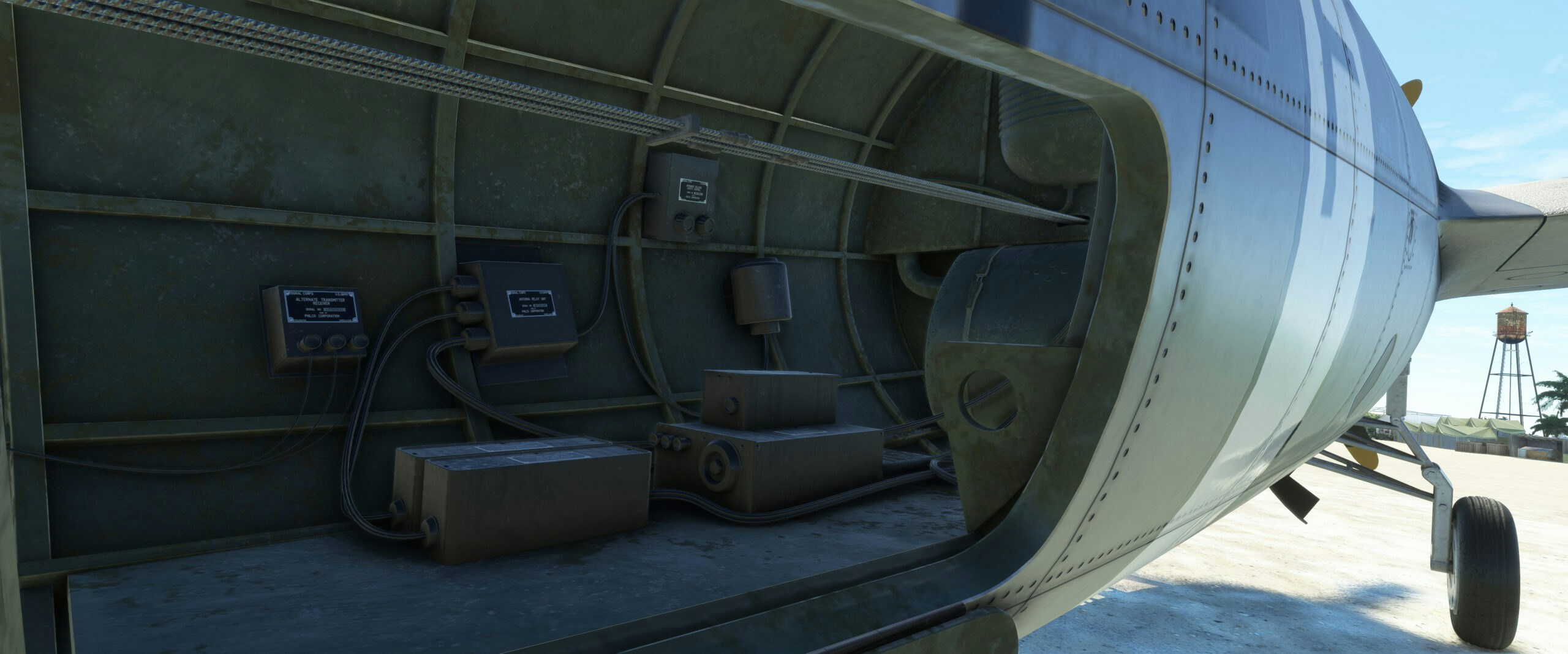
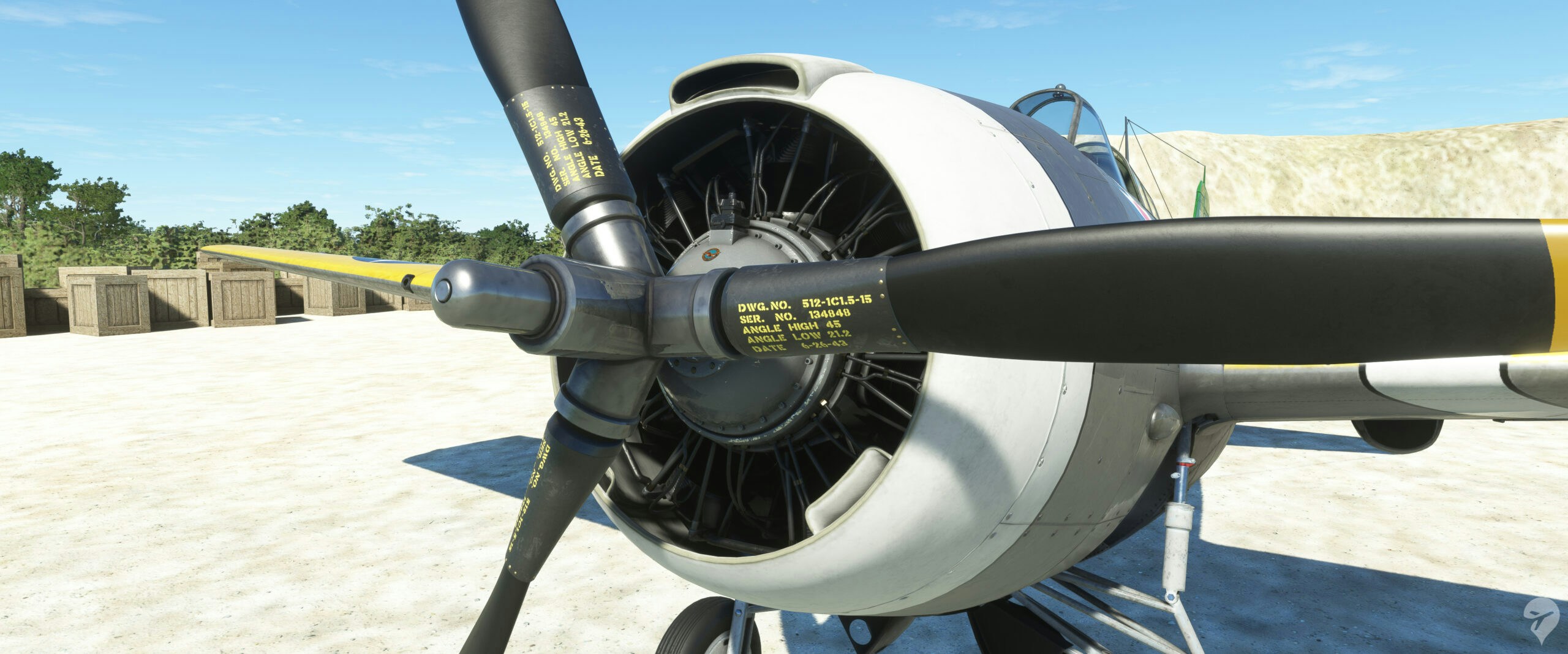
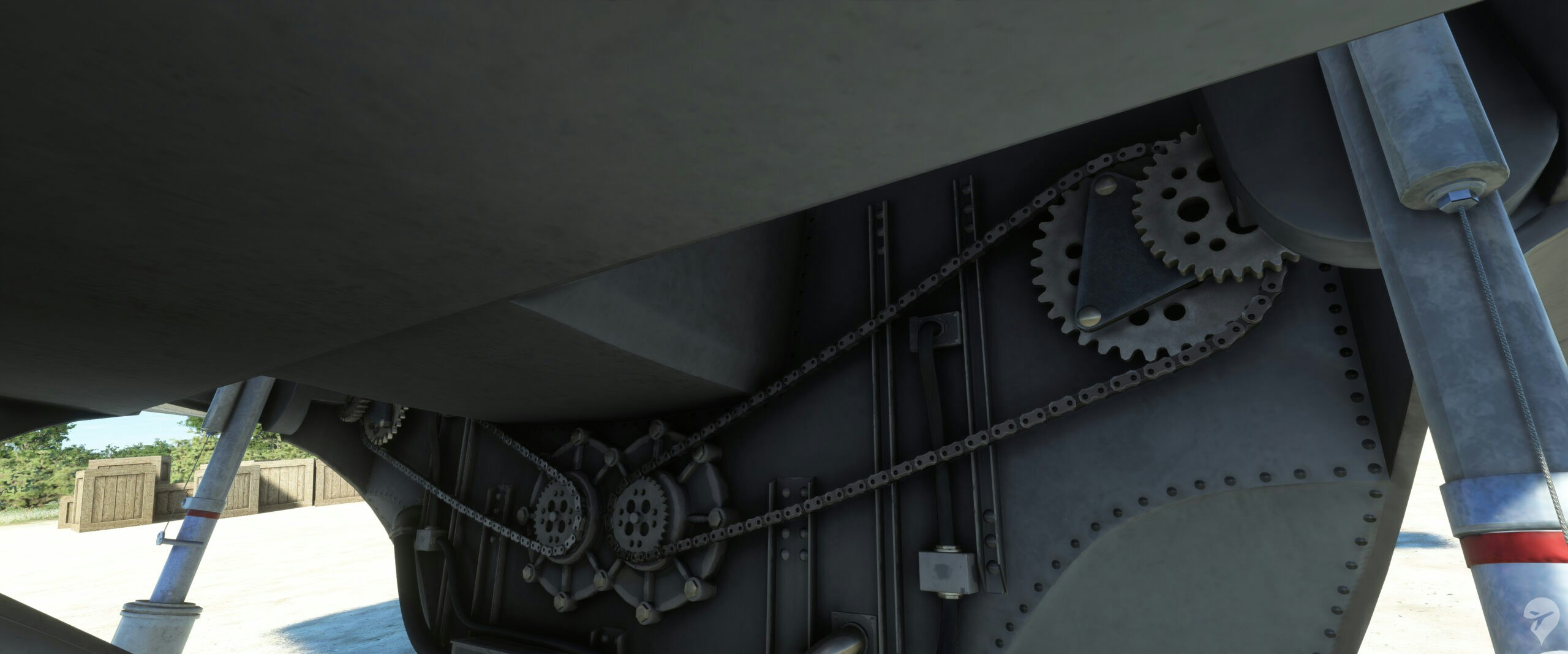
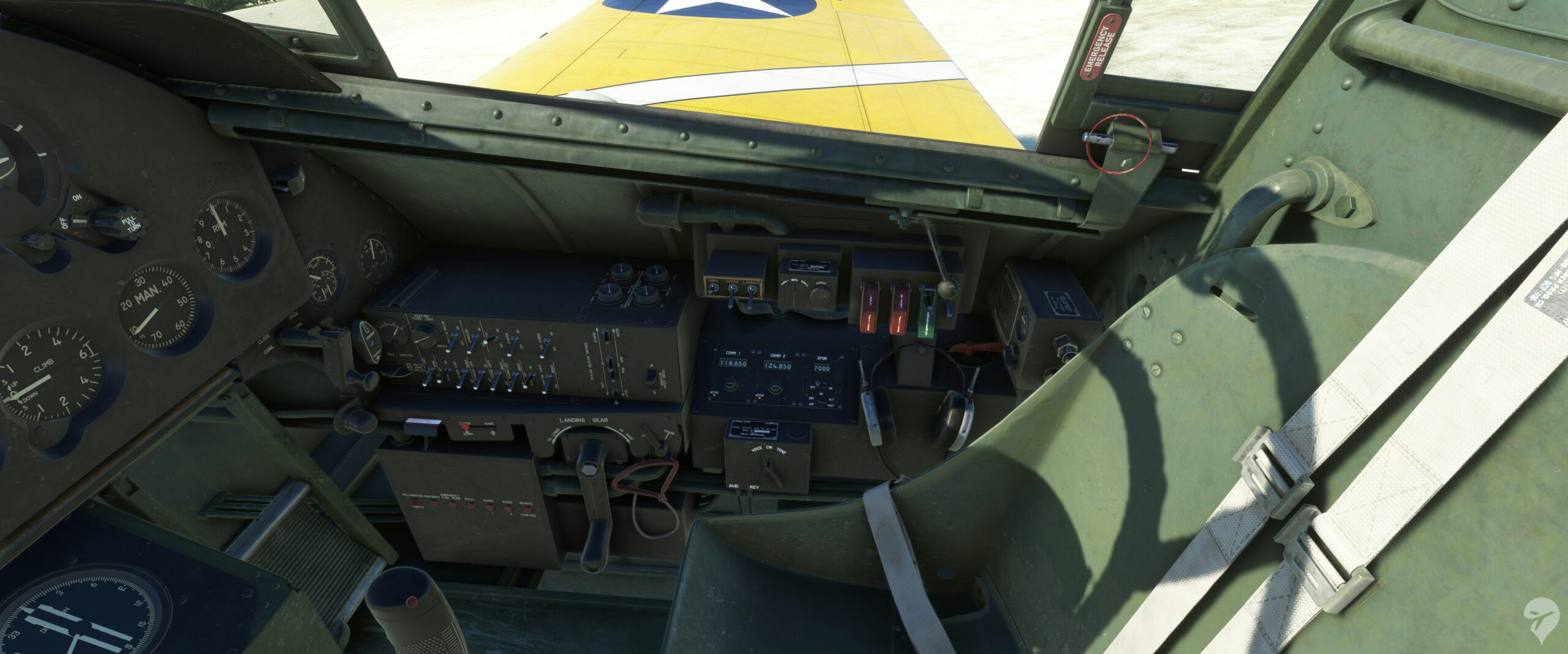

On the outside of the aircraft the textures are also high in quality. The included liveries are based on real aircraft, past and present. They feature differences in reflections, which is a nice added detail. Some liveries have very matte painting, while others are more reflective and appear to “shine” more. Unfortunately, some of the more authentic or “era-appropriate” liveries feature fairly little wear and tear on the outside. Others are nicely modelled with dirt, grime and streaks from the exhaust at the front. The rivets on the exterior all look really sharp, and seemingly a lot of work has gone into them, using texture maps that make the rivets stand out and reflect differently, making them not appear as just 2D textures.
Unfortunately the aircraft does not come with an age-appropriate WW2 pilot, as we’ve seen in many other aircraft that try and emulate warbirds.
Sounds
The engine sounds of Got Friends’ Wildcat are heavy, exactly like the real life Pratt & Whitney R-1830-90 “Twin Wasp” engine would. There is a little bit of sputtering as the engine starts turning over and comes to life. There is also a well balanced variation to the sounds as you go from low to high RPM, or vice versa. The canopy muffles the engine a little bit once you close it. The several stages of opening or closing your canopy all muffle the engine differently depending on how much your canopy is opened.
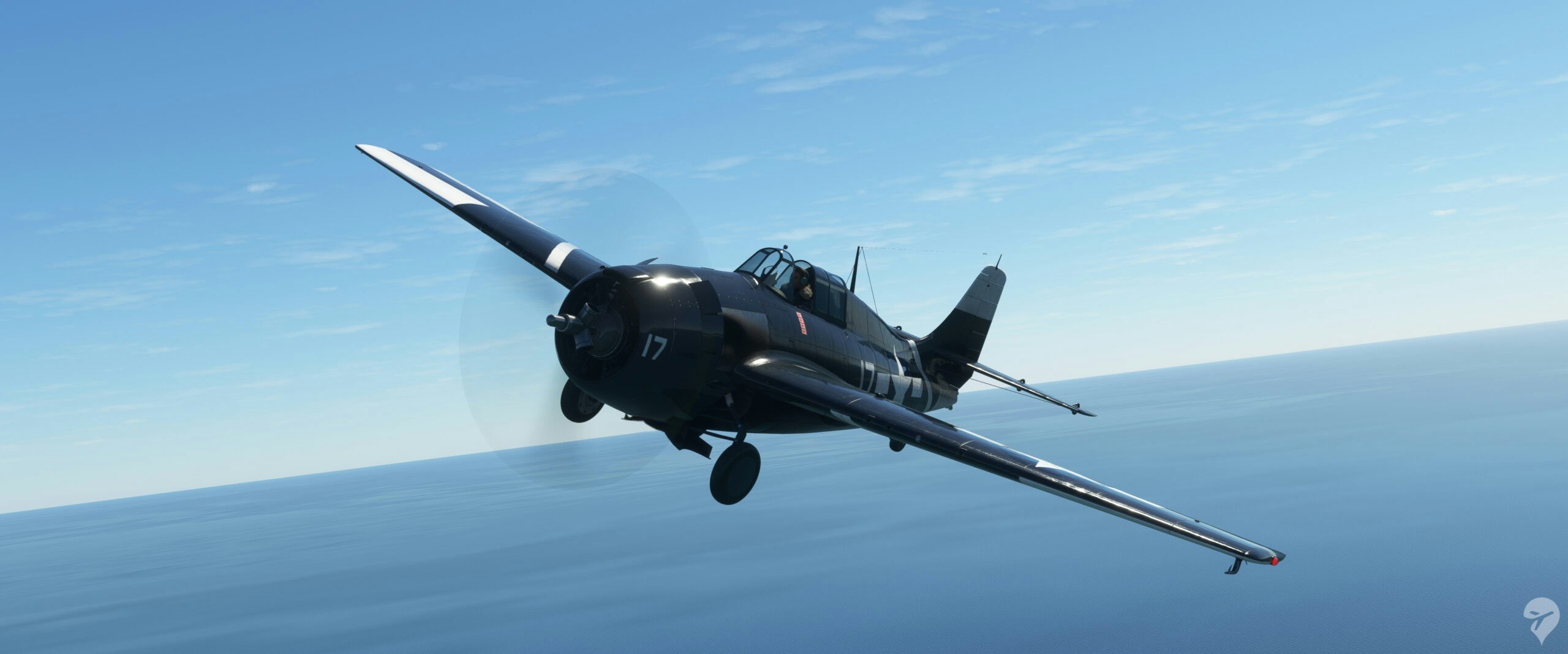
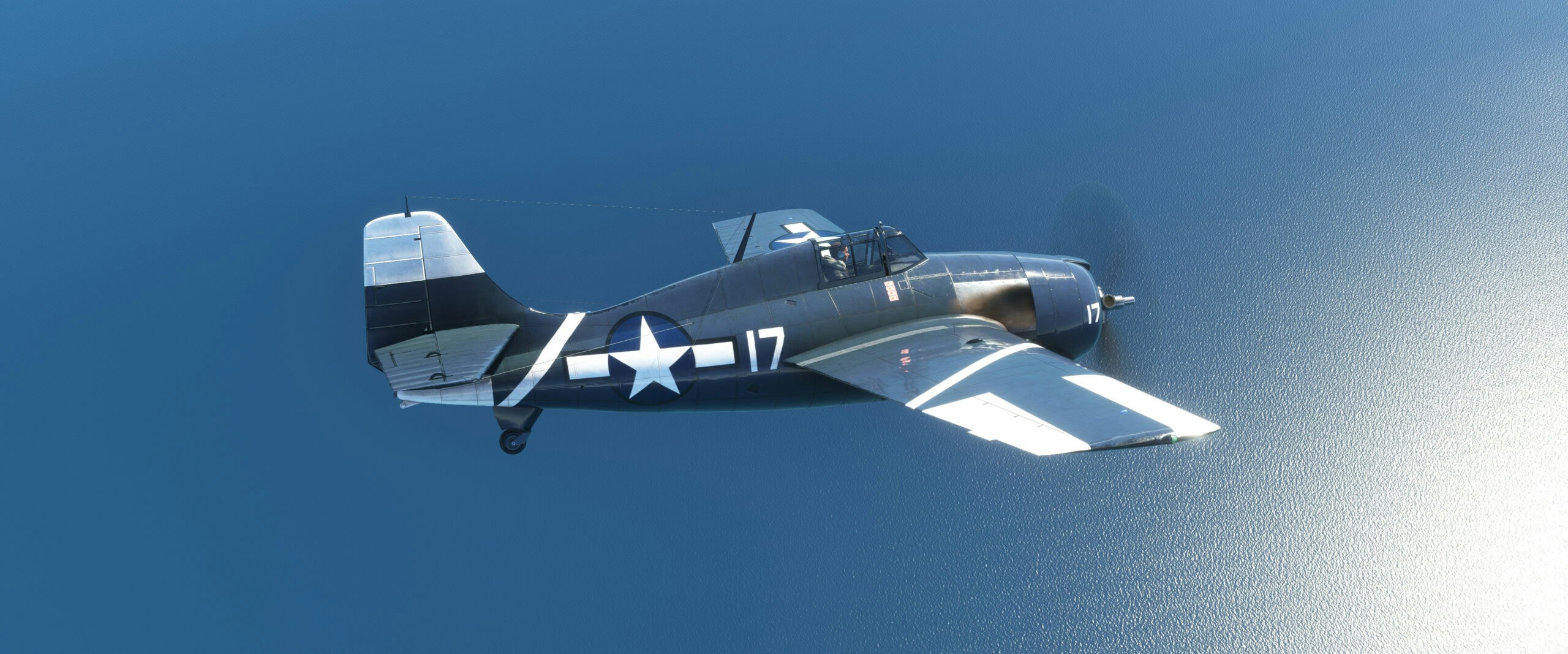
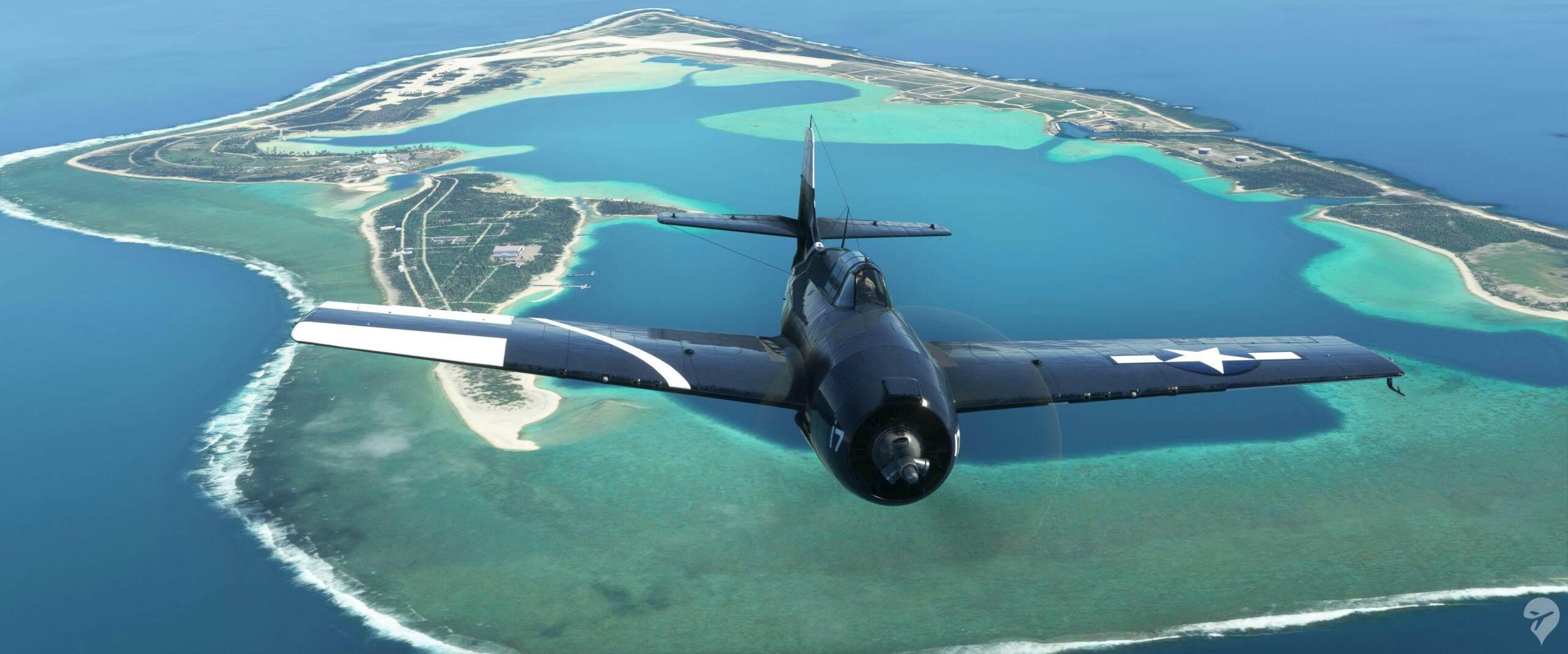
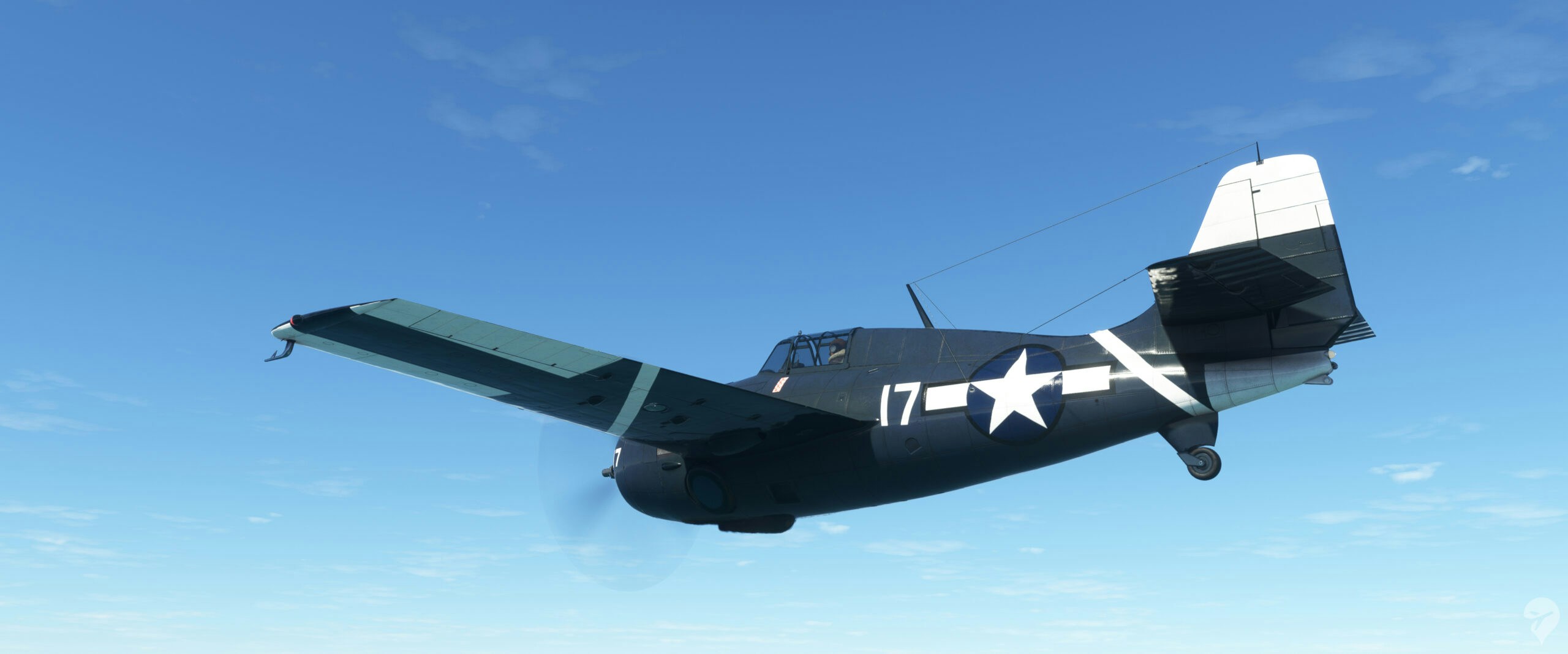
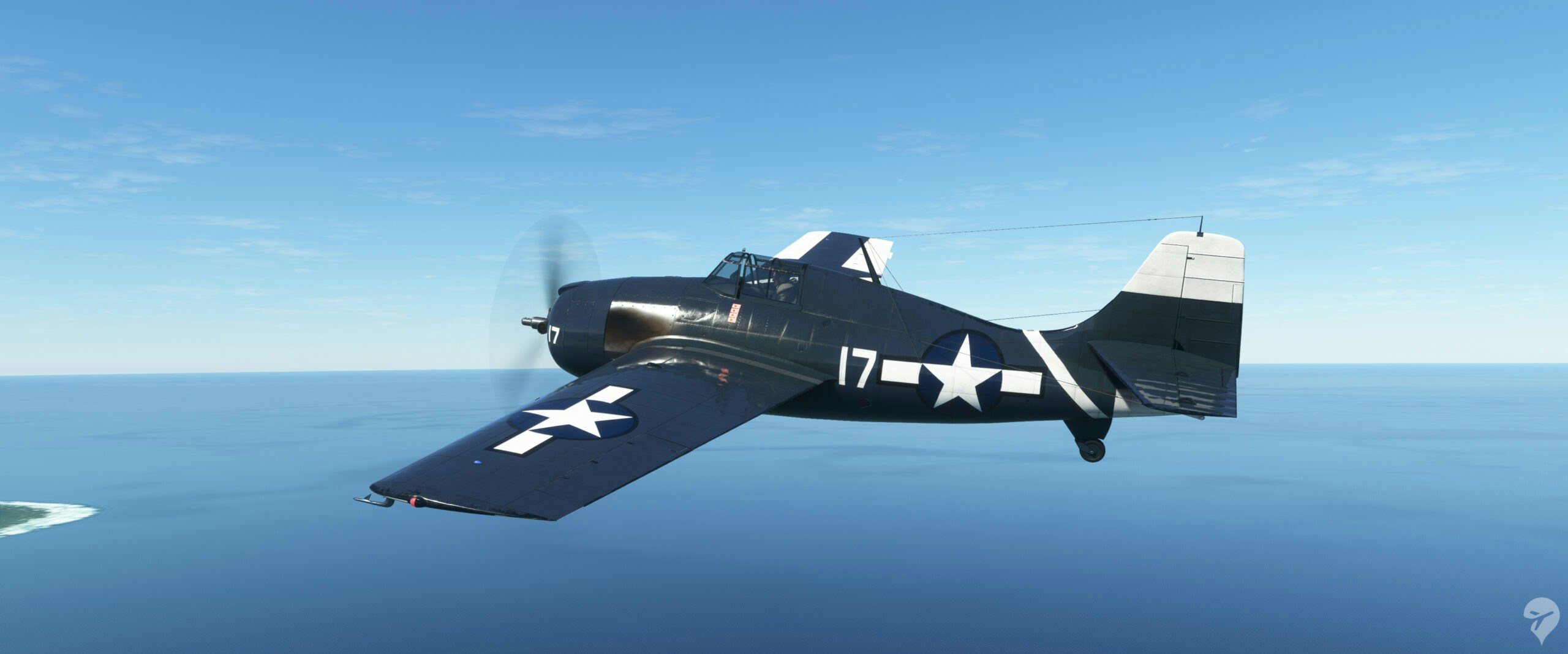
Flight Modelling
Of course, the most important aspect of the airplane is how it actually flies. In short, the flight model of Got Friends’ Wildcat is very good. No doubt this is helped by the fact that one of the developers on the Got Friends team is also the flight mechanics developer over in the FlyingIron Simulations team. In previous experiences I’ve always been very satisfied with the work delivered by FlyingIron Simulations, and it seems some (or a lot) of that has carried over to Got Friends’ Wildcat.
The plane comes with custom ground dynamics, adding an authentic tail-dragger feel to the taxi mechanics. Due to this, taxiing is slightly challenging, yet an authentic and accurate experience. After some practice taxiing the plane around, it’s not too hard once you learn to manage the power and the rudder. Upon take-off, the plane will fight you very little and go almost perfectly straight if you apply the throttle gently. I think the take-off is slightly too easy as the plane doesn’t show the behaviour I expect nor that I think is accurate.
Once airborne, this plane requires a bit of balancing, finding the right setting for your manifold pressure and propeller, as well as trimming the plane correctly. She doesn’t feel too fast, although you can still make some decent speed in it. The climb rate of the aircraft is ‘okay’, as is its turn rate. This part of the flight dynamics seems fairly authentic from how pilots used to describe the aircraft.
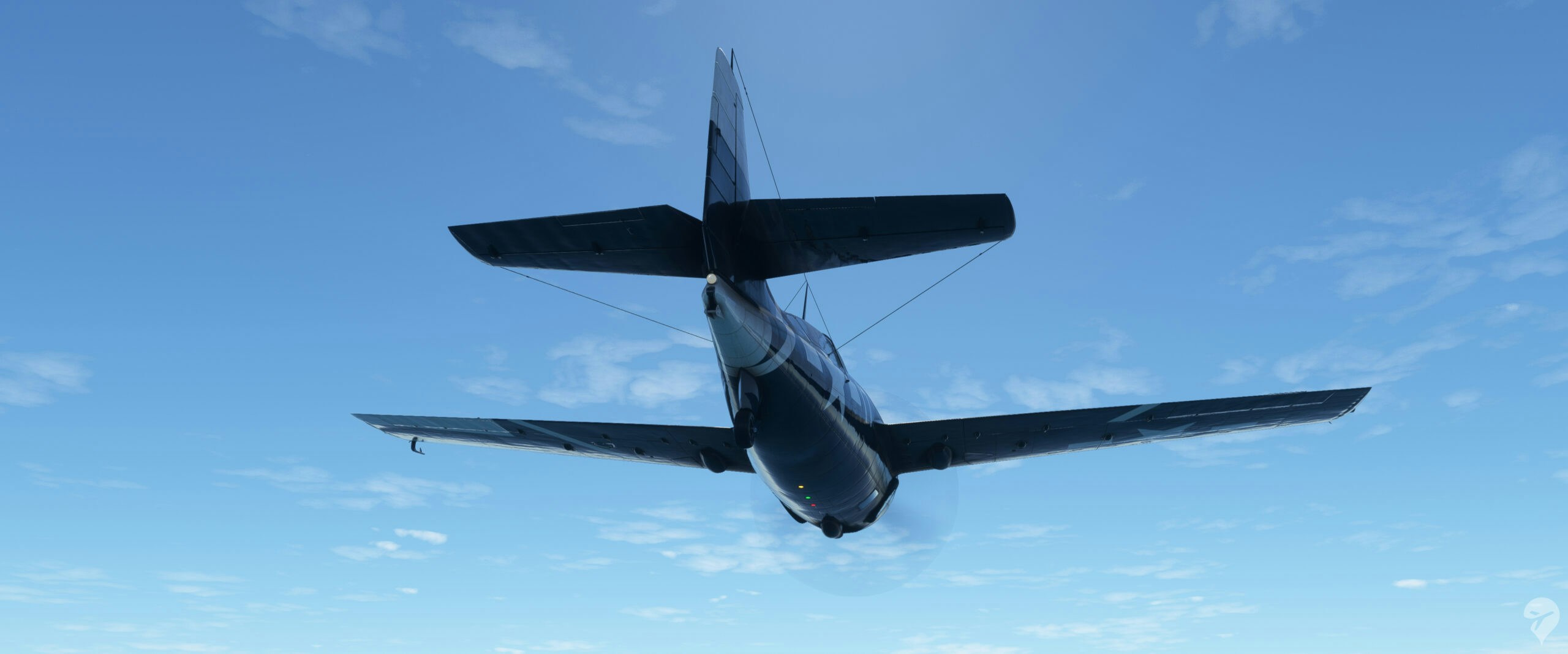
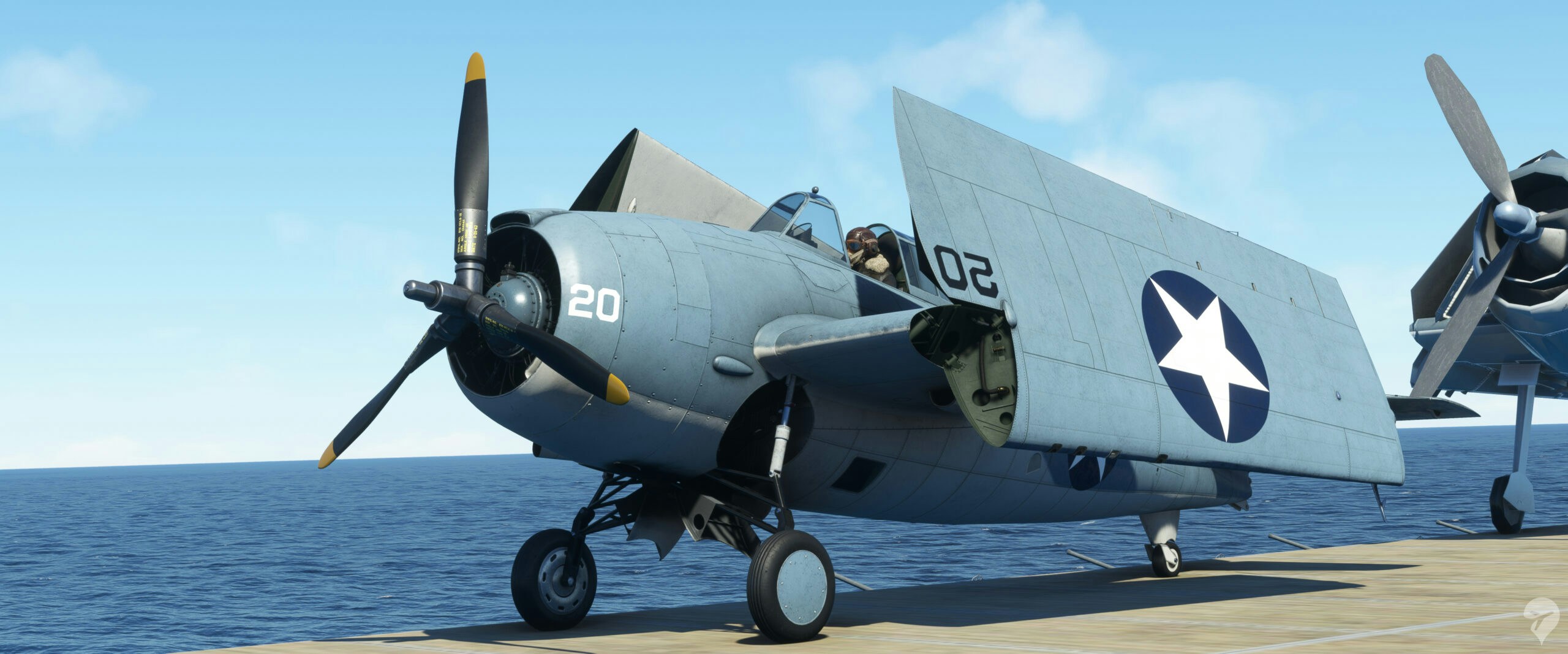
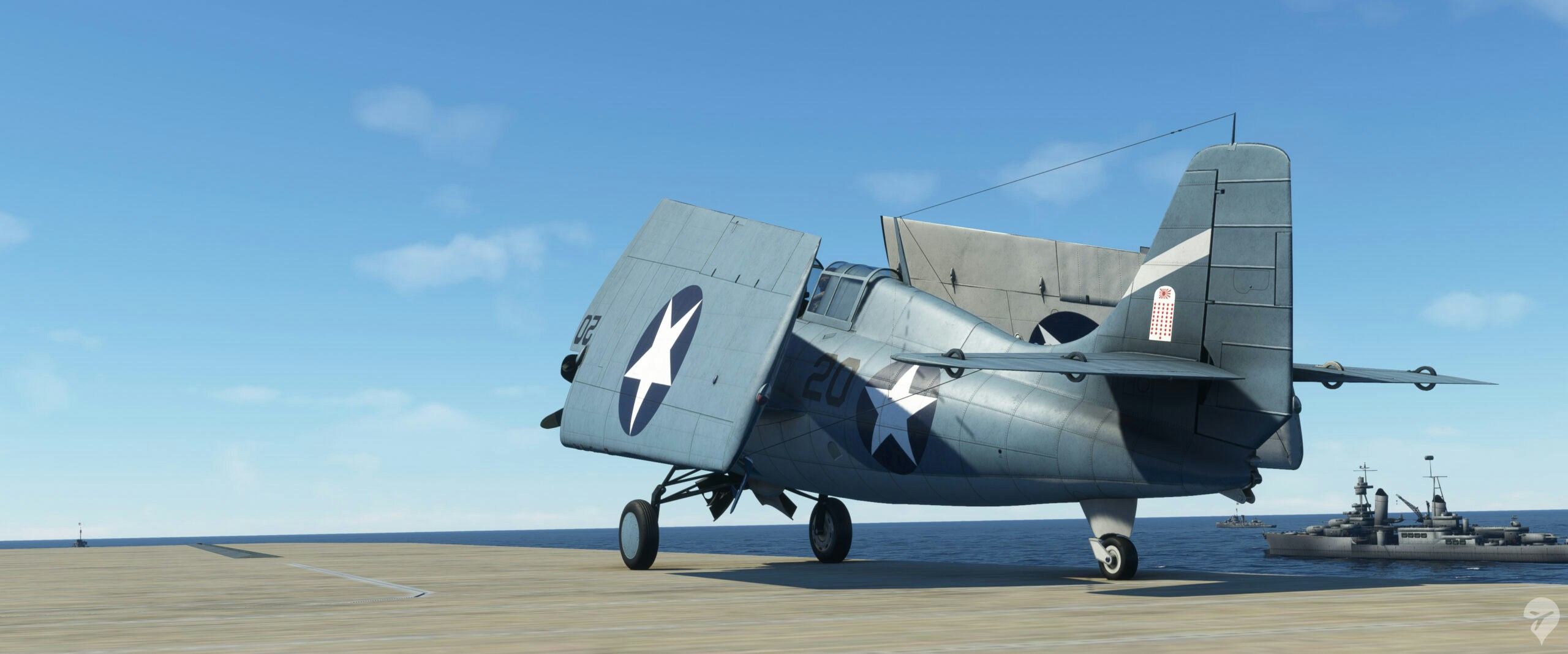
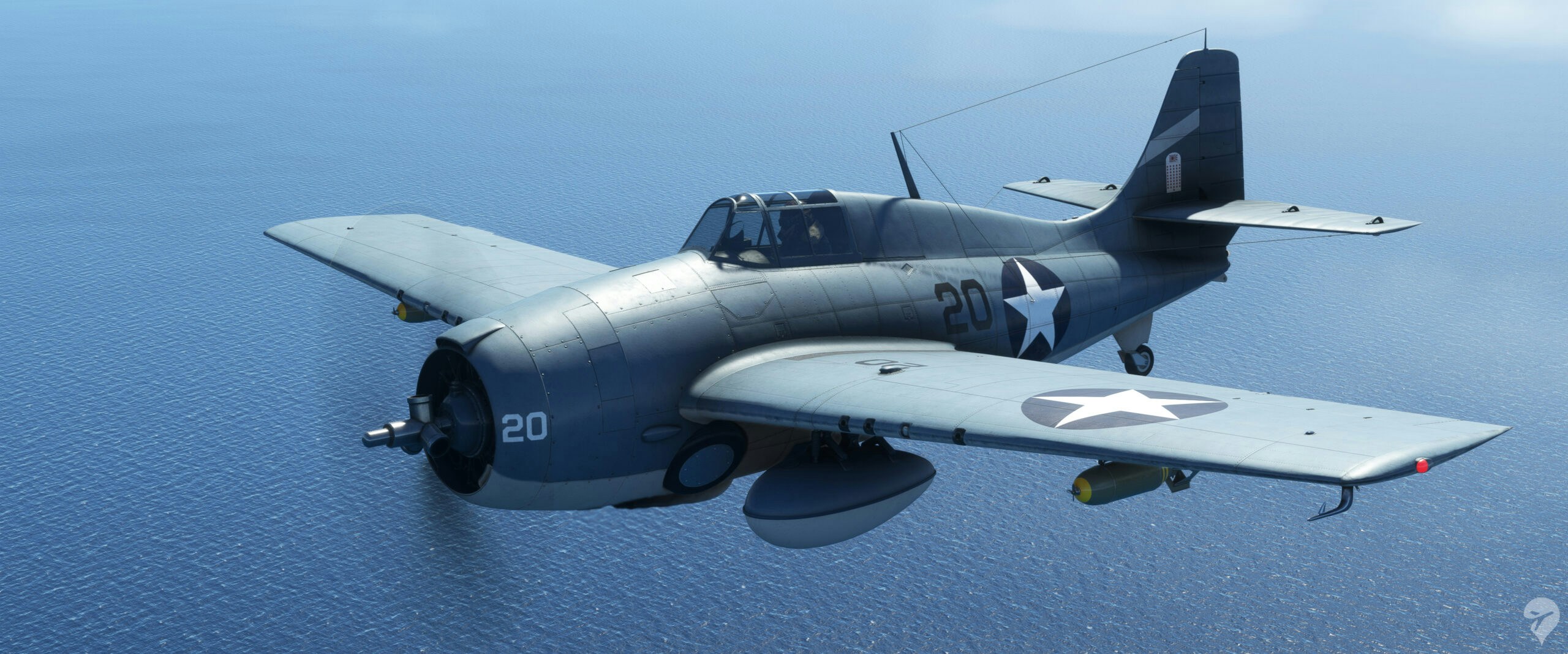

Aircraft Systems
Unfortunately, I am a little disappointed in the aircraft system depth. Especially the engine management is something that is lacking in my opinion. The engine does not seem to be affected by your power settings, meaning you can run the plane outside of its recommended engine settings for as long as you want. This seemingly doesn’t have an effect on your plane’s performance. The engine won’t overheat, which makes the cowl flaps and engine temperature gauge quite redundant features.
Another point that I dislike about the aircraft systems is the lack of a supercharger implementation. I’ve written about this before when reviewing FlyingIron Simulations’ Hellcat, which I found lacking in the same way that Got Friends implementation lacks. There is no manual control for the supercharger. Instead, it operates automatically, meaning the supercharger kicks in automatically at 5000 ft and 14000 ft. As I wrote in my Hellcat review, this lack of a supercharger control means you need to carefully anticipate these altitudes as your engine behaviour will change when the supercharger kicks in. It also means that flying at 5000 ft is not viable, as fluctuations in your altitude means the supercharger might kick in and out constantly. FlyingIron Simulations came with a solution to this latter problem, by increasing the transition altitudes by an additional 500 ft. Once again, I do appreciate that MSFS might have limited supercharger support. Regardless, I still feel like having no control over this mechanism at all is a missed opportunity.
Animations and Effects
Got Friends has included so many extra features and animations in this aircraft that I felt they deserved their own category. These animations and effects are incredibly varied in range; from aircraft vibrations enhancing the immersion, to “play” features that allow you to perform attack runs and bombing missions. So let’s explore some of these features.
The effects all start the second you’re loaded up in your aircraft. Your wings are folded up, so these need to be unfolded first using one of the switches on your right side panel. These switches served a different purpose in the real aircraft, but here they function as controls for the animations and “play features”. After unfolding the wings (with a small visual bug where the wingtips will clip through the ground), you can open the map tray where you can make small configurations to your aircraft. Here you can customise the realism interaction settings of your aircraft, refill the drop tanks, enable acrobatic smoke and more. After this you’ll work your way through the start-up flow.
I want to make a small mention here of a configuration option for your aircraft: the ‘crank-mode’. You can operate the cowl flaps and the gear in two different ways: crank-mode or automatic mode. Automatic mode allows you to raise or lower the gear with a single button-press or interaction with the associated cockpit control, much like you do with almost every other plane in MSFS. Crank-mode requires you to actually crank the associated cockpit control, meaning you’ll need to turn the cowl handle or gear handle a good number of times to operate the cowl flaps or gear. This is especially important for the gear, which will otherwise be left in an intermediate position between retracted or deployed. It’s a very nice authenticity touch to this plane, although I do wish the developer would have added the option to use hardware switches for the crank mode. Having to move the camera and mouse around to retract your gear after take-off or before landing is inconvenient and clumsy. It doesn’t allow you to focus on your other controls very well in this all too crucial stage of flight, and as a result, I found myself using the crank-mode less than I would have liked to.

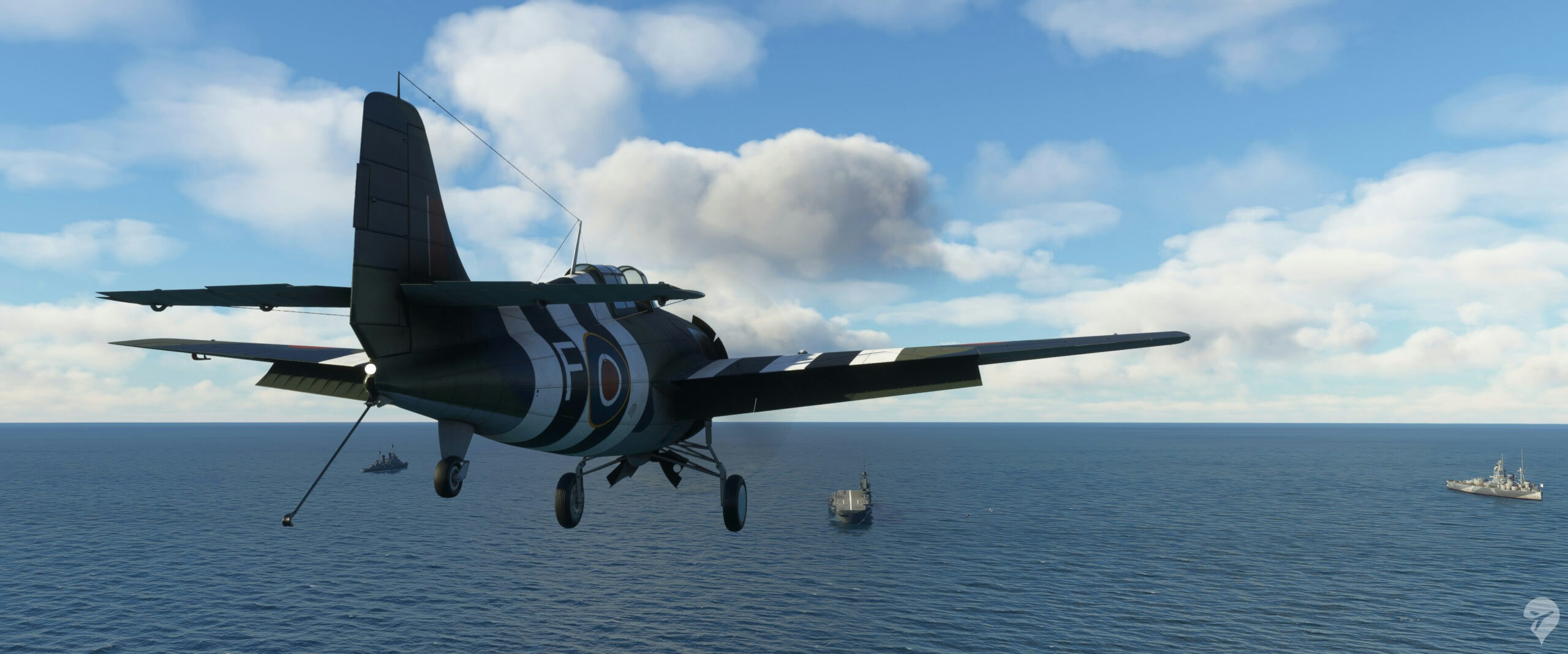
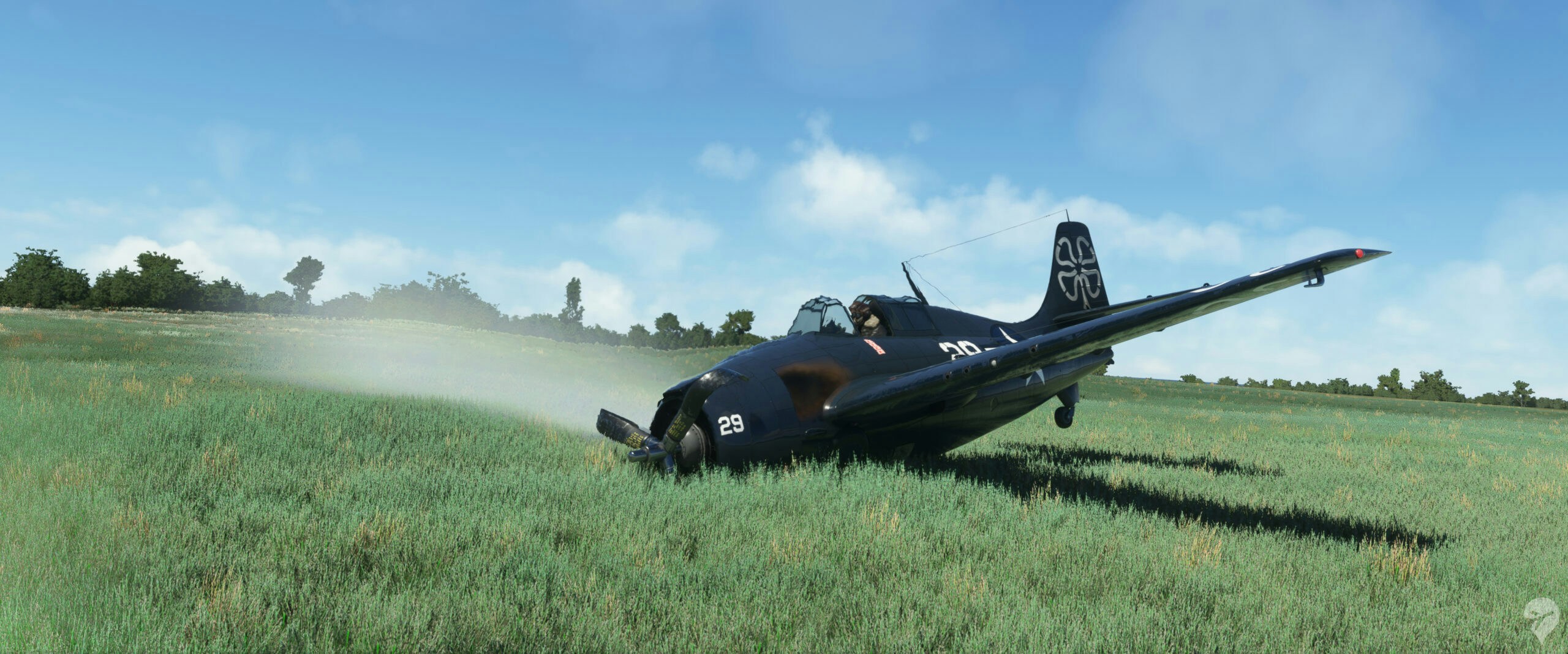
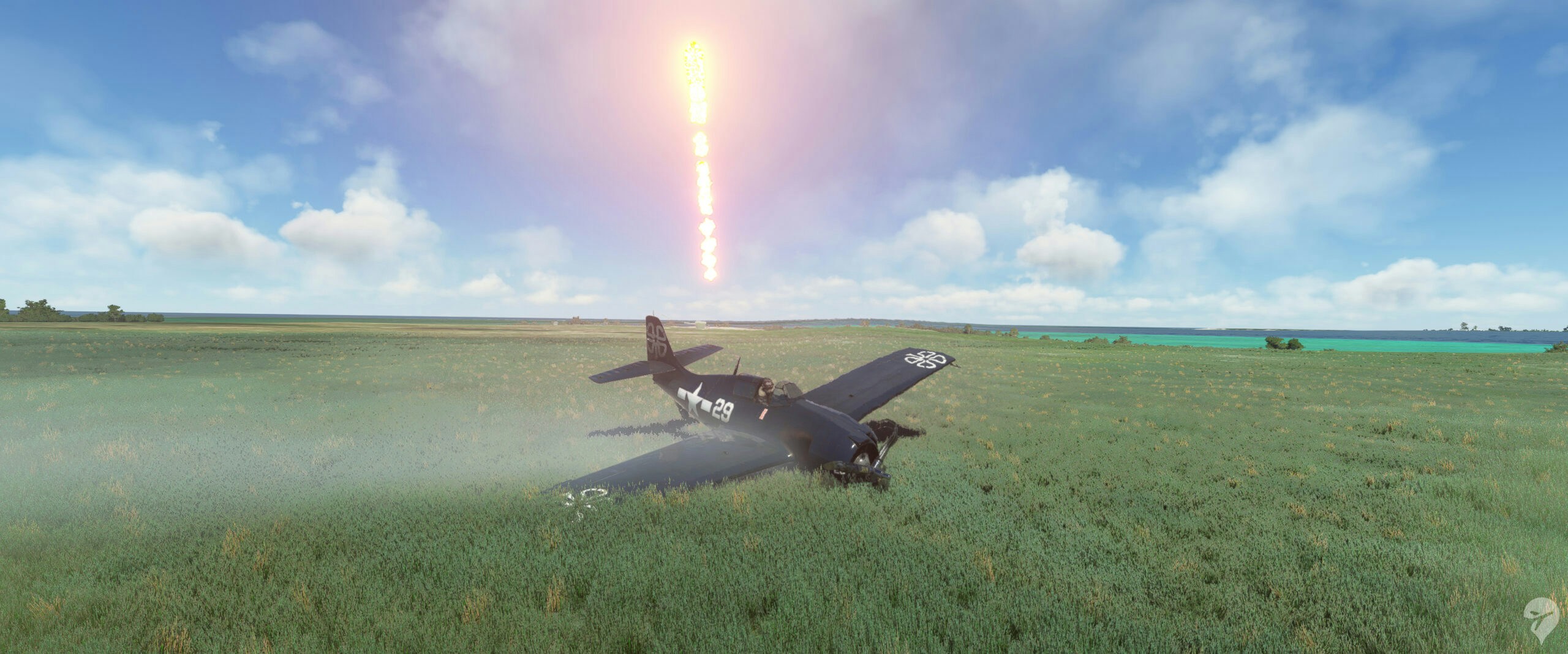

Once you start the aircraft up, your view will be temporarily blocked by a lot of smoke coming out of the engine exhausts. With the engine running, the cockpit really comes to life. The gauges will shake ever so slightly due to the vibrations of the engine. The glare shield in front of you, located right above all the engine gauges, will vibrate a bit more noticeably. Other objects, such as the cowl handle, cowl flaps outside and several other cockpit elements also slightly shake due to the vibrations of the engine. And on the ground, the plane itself will shake slightly on its landing gear. Though these effects are generally small and sometimes not even that noticeable, they do add a lot to recreate a realistic and authentic atmosphere inside the cockpit.
I’ve previously criticised some developers for making highly detailed planes that lacked aesthetic weapon and armoury effects. This developer, however, seems to have listened to that feedback. The Wildcat comes with a rather large assortment of animations and effects to this end. To begin with, the external fuel tanks. They can be attached while on the ground, function as expected and are seemingly quite normal. However, once they are empty, you can eject them from your plane, and this is done in a fun and spectacular manner; you can eject the drop tanks and watch them go to the ground, leaving behind a trail of vapour. This brings us to our second ‘droppable’ feature on this plane: bombs.
You can equip your Wildcat with two bombs that can be dropped together or separately. Upon impact with the ground, they feature an explosion effect. For those pilots that are looking more for a virtual dogfight, this plane also features machine gun ammunition that leaves with spectacular tracers and muzzle flashes from your gun barrels. There is also an acrobatic smoke effect, which leaves behind a trail of smoke for your spectators to watch. If you’re less lucky as a pilot and you find yourself crashed upon an abandoned beach, there are prop bend effects if you make a crash landing, followed by the haze from the heat as well as smoke coming from your engine. Fret not, as you still have an audible S.O.S. signal as well as a Molin signal flare that you can fire to draw attention to your location. Last but not least, this plane comes with a retractable tail hook and built-in catapult launcher that allow it to work from any carrier package of your choice without the need for external tools.
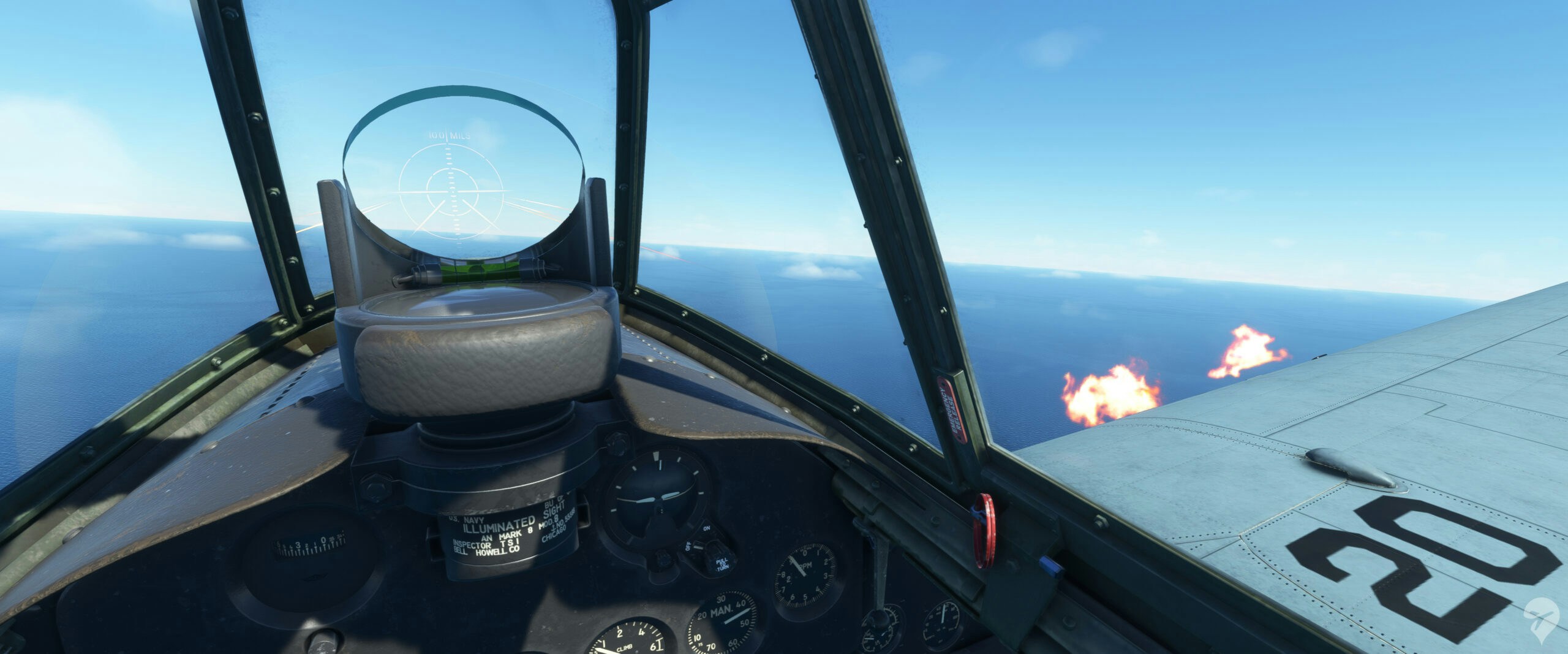
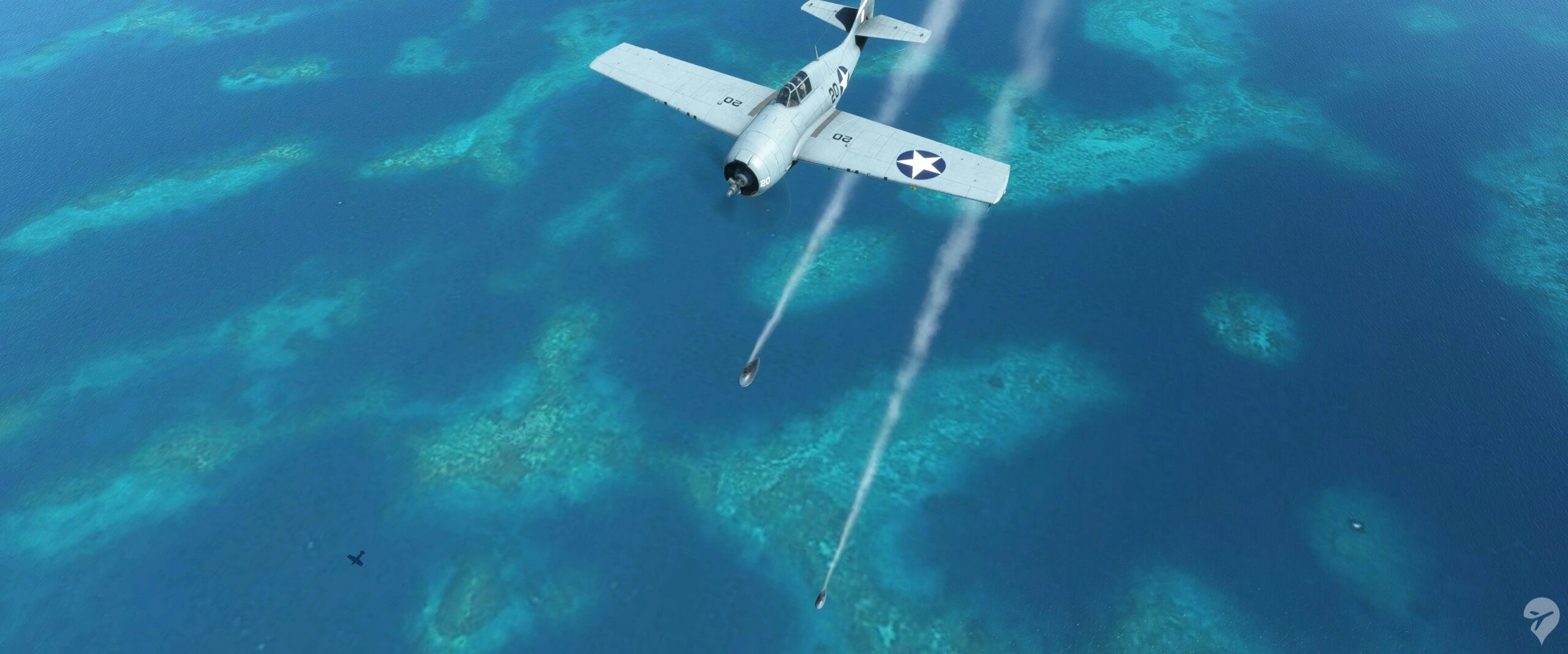
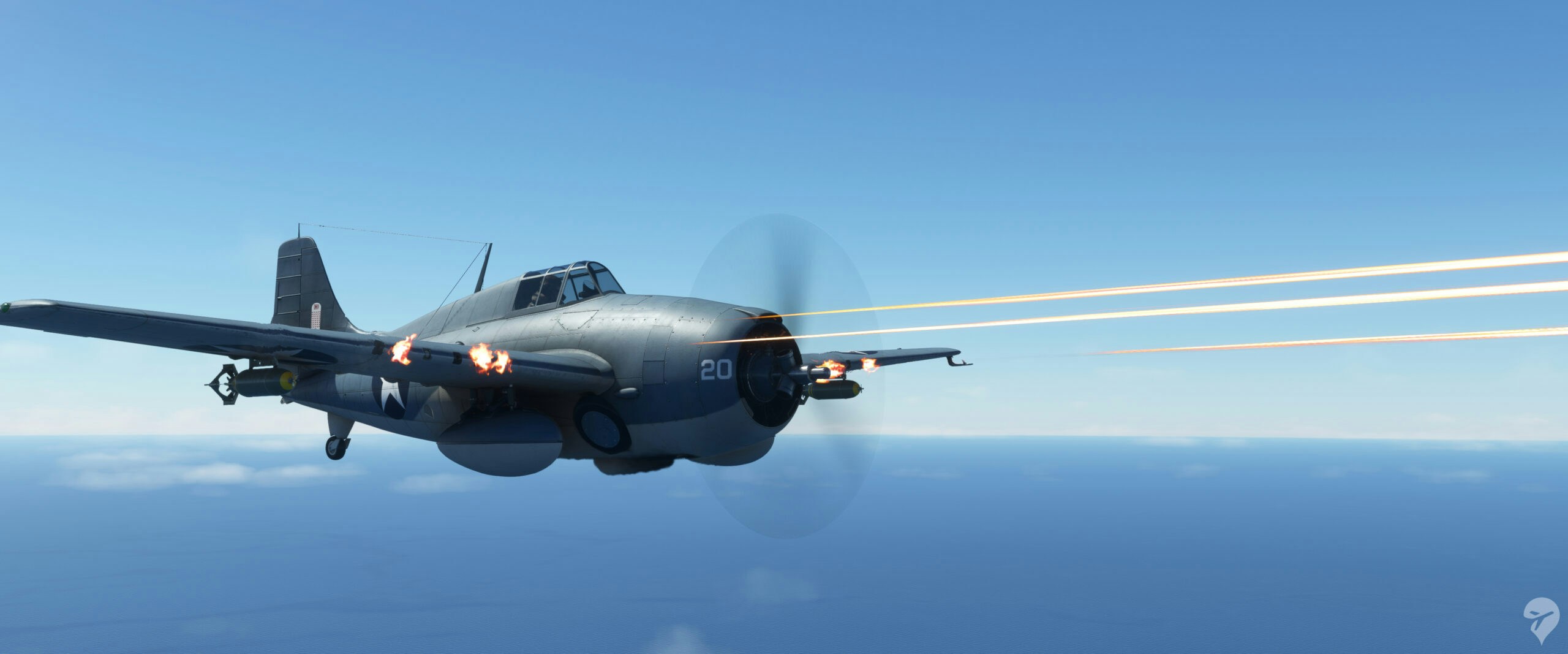

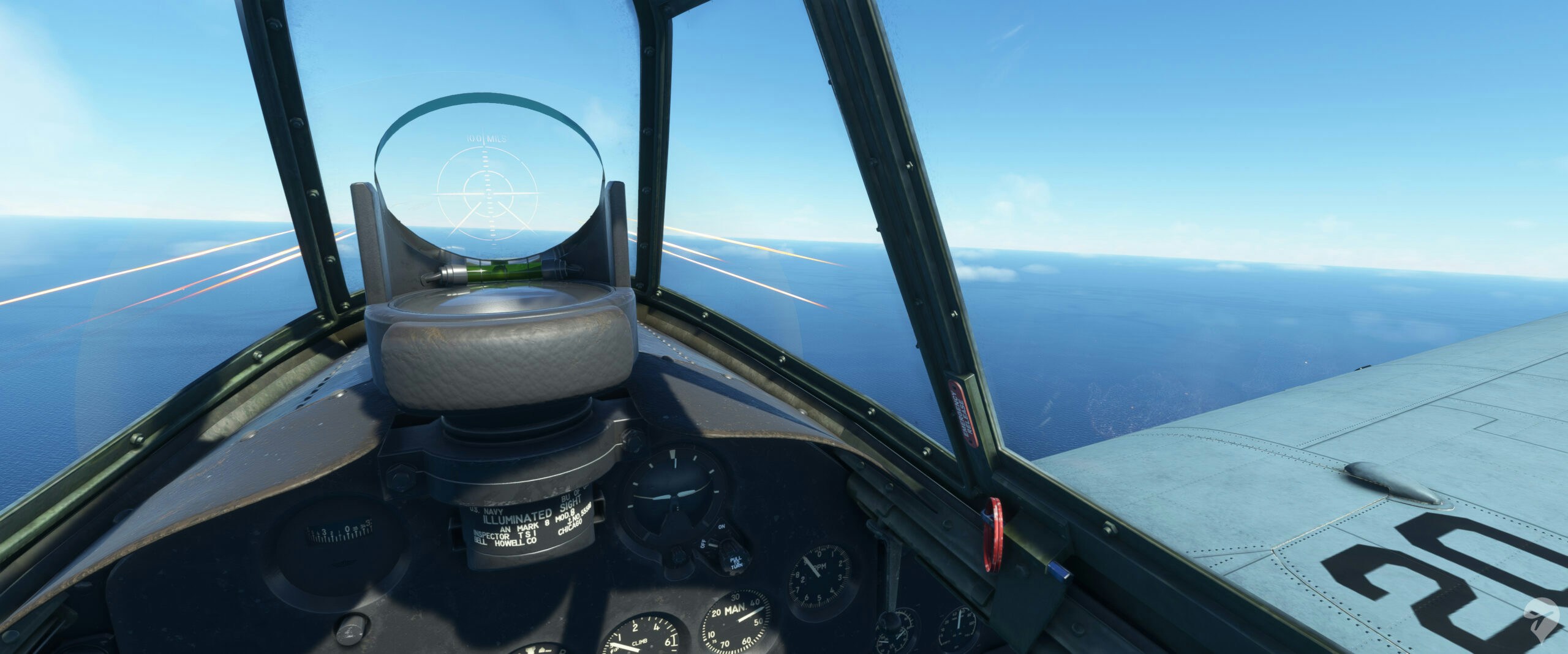
Conclusion
I think Got Friends has made an excellent warbird. The plane looks beautiful. A highly detailed model, complemented by high quality textures, although these lack a little in wear and tear. The sounds seem very accurate and they are pleasant to listen to, and make you feel immersed in the aircraft. That immersion is then helped by all the animations, as intricate as some of them are. They make this aircraft feel alive. Unfortunately, the lack of engine heating that needs to be managed and the lack of a supercharger are misses in my book. The aesthetic effects and animations are very fun and give an additional and different level of simulation that we have not seen often in MSFS.
